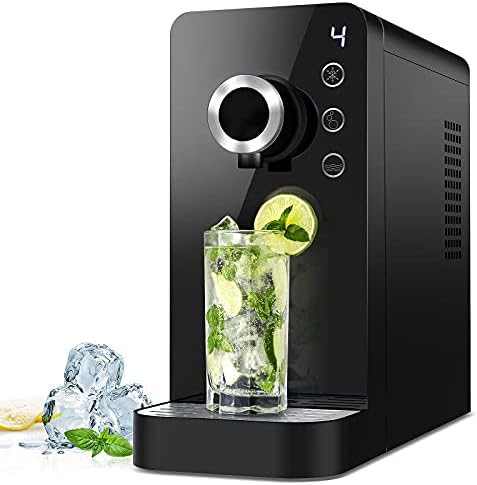Currently Empty: 0.00$
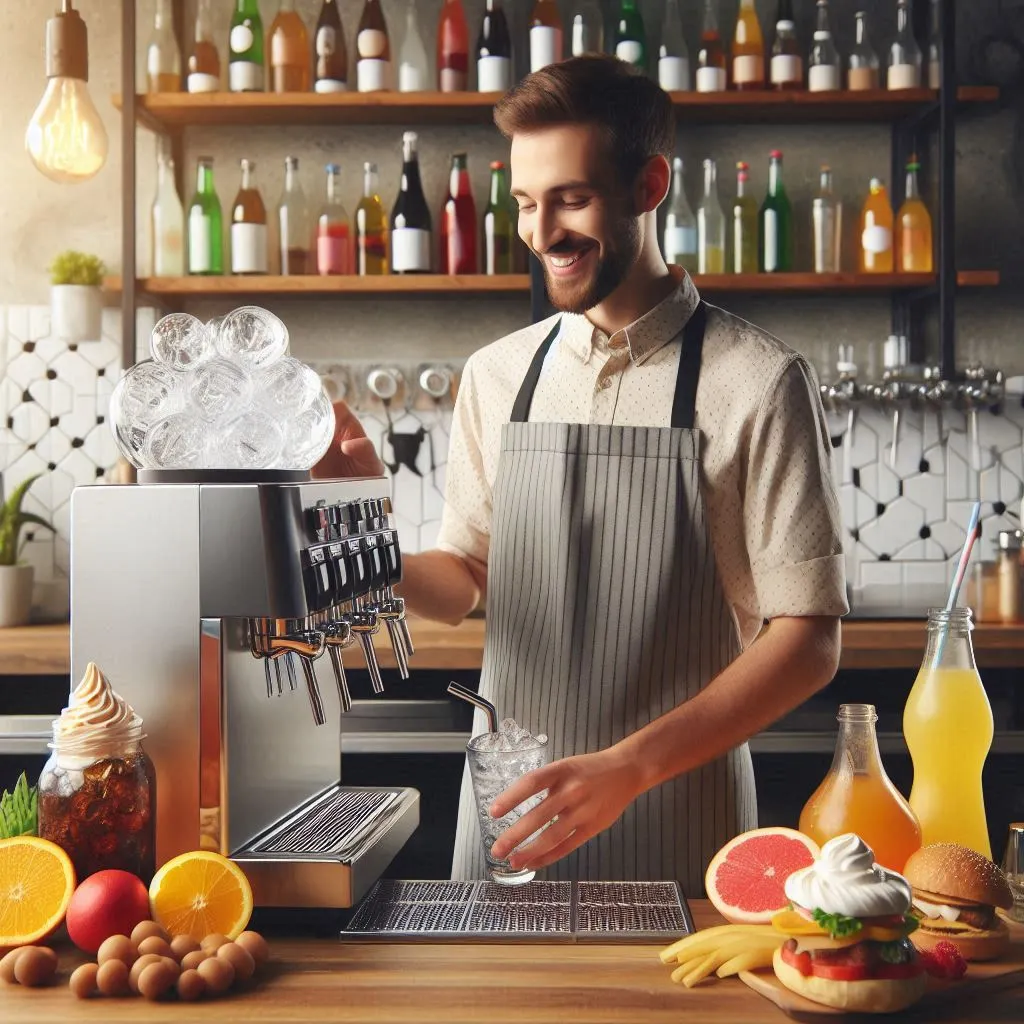
In today’s fast-paced world, a soda fountain machine with an ice maker provides a convenient, space-saving solution for serving cold, refreshing beverages at the push of a button.
Whether you’re running a restaurant or upgrading your home setup, choosing the suitable machine is essential. This guide will walk you through everything you need to know, from the benefits and features to installation and maintenance tips.
Understanding Soda Fountain Machines with Ice Makers
What Is a Soda Fountain Machine?
A soda fountain machine is designed to dispense carbonated soft drinks in various flavours. Popular in restaurants, cafes, and even home settings, it allows users to choose from multiple soda types, often at the touch of a button.
These machines mix carbonated water with flavoured syrup, consistently delivering a fresh, fizzy drink. They’ve evolved significantly, integrating new technologies that enhance functionality and user experience.
How Ice Makers Are Integrated
Modern soda fountain machines often have a built-in ice maker, simplifying beverage service. Instead of purchasing a separate machine, this integrated design offers a one-stop solution for soda and ice.
The ice maker typically resides at the top of the unit, feeding ice directly into the drink or a holding bin for future use. This 2-in-1 combination is efficient, saving time and space while ensuring customers or guests can enjoy cold beverages whenever they like.
Benefits of a Soda Fountain Machine with Ice Maker
Convenience for Restaurants and Homes
One of the primary benefits of a soda fountain machine with an ice maker is its sheer convenience. For restaurants, it allows for quick, seamless service during busy hours. Thanks to the integrated ice maker that ensures beverages are always cold, customers can get their drinks without delay.
For homeowners, it brings the experience of a soda fountain right into the kitchen, making it easy to entertain guests or enjoy a cold soda on a hot day.
Comparison Table: Commercial Use vs. Home Use for Soda Fountain Machines with Ice Makers
| Feature | Commercial Use | Home Use |
|---|---|---|
| Size and Capacity | Large, high-capacity units designed to serve many customers. | Smaller, compact units suitable for family or small gatherings. |
| Ice Production Rate | High production rate (300-500 lbs/day) to meet heavy demand. | Lower production rate (50-100 lbs/day) ideal for occasional use. |
| Soda Flavor Options | Multiple flavor options (5-10 or more) to cater to diverse tastes. | Fewer flavor options (2-5) due to limited usage needs. |
| Installation Requirements | Requires professional installation with plumbing and electrical hookups. | Easier DIY setup; often just requires a power outlet and water source. |
| Maintenance | More frequent cleaning and maintenance due to heavy daily use. | Less frequent cleaning required, but still needs regular care. |
| Cost | Higher upfront cost for large, high-capacity machines. | Lower cost for smaller, simpler models suitable for home use. |
| Footprint | Takes up significant space; usually a freestanding unit. | Compact countertop models available to save space. |
| Durability | Built to withstand continuous, heavy-duty operation. | Less durable, as home units are designed for occasional use. |
| Customization | Often customizable with more drink and ice type options. | Limited customization; fewer options for drink variety. |
| Noise Level | May produce more noise due to high ice production and larger size. | Typically quieter due to smaller size and lower ice production. |
| Energy Usage | Higher energy consumption due to 24/7 operation and large size. | Lower energy consumption as used intermittently. |
Cost-Efficiency in the Long Run
While the initial investment in a soda fountain machine with an ice maker may seem steep, it can be more cost-efficient over time. Purchasing a separate ice maker and soda dispenser can lead to higher upfront and maintenance costs.
Combining the two in a single unit reduces the need for additional equipment, lowering energy consumption and repair expenses. This integrated solution ultimately helps save space and money in the long run.
Space-Saving Features
Space is always a consideration, especially in commercial kitchens or small home setups. A combined soda fountain and ice maker reduces the footprint of having two separate appliances.
It’s designed to be compact while offering both functionalities in one sleek machine. This makes it an excellent fit for tight spaces, like a small cafe, a convenience store, or even a home bar.
Key Features to Look For
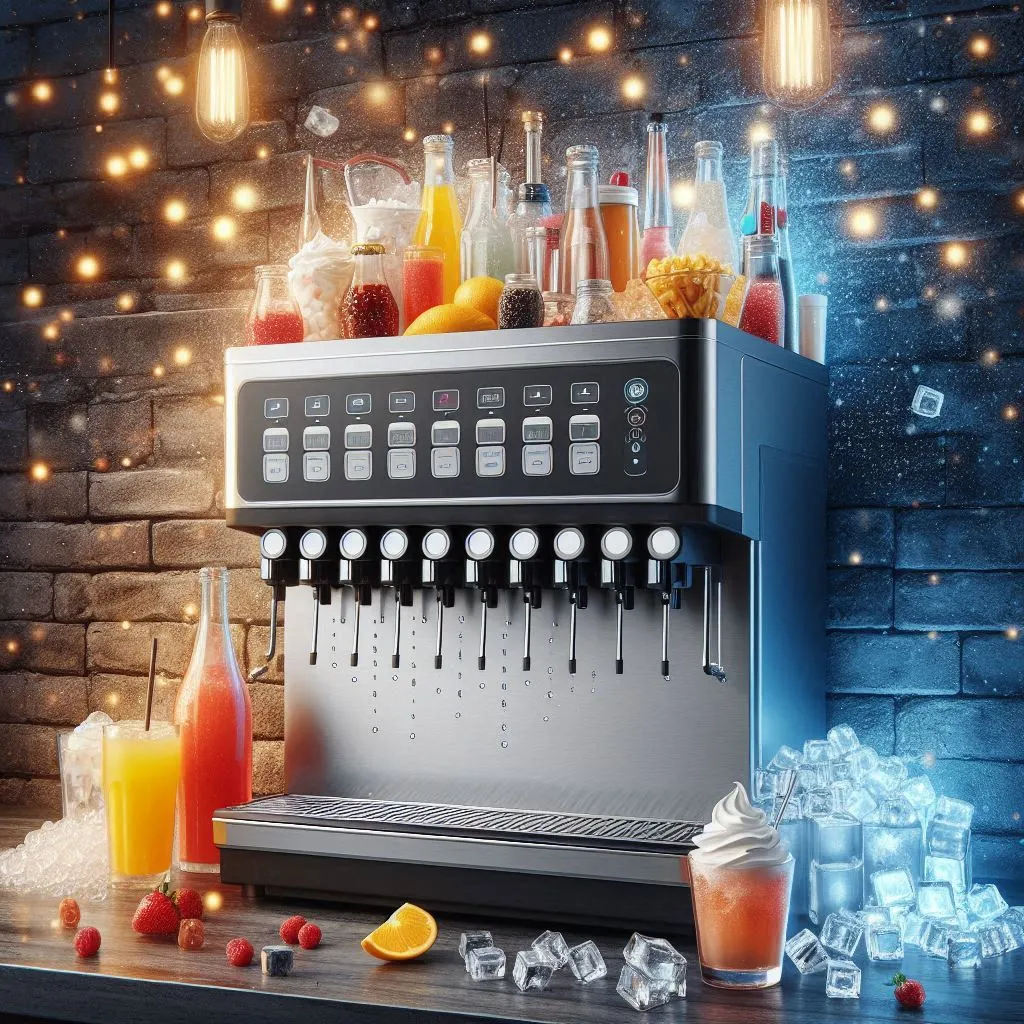
Size and Capacity
When choosing a soda fountain machine with an ice maker, one of the first things to consider is the size and capacity. This will depend on your needs—whether you’re buying for a commercial setting or personal use.
Machines can range from compact countertop models that serve a few drinks at a time to large, freestanding units designed for high-traffic environments. Ensure you select a machine that matches the volume of beverages and ice you expect to serve daily.
Ice Production Rate
Another critical factor is the ice production rate. Ensuring that the machine can keep up with demand is crucial for businesses. Most models specify how much ice they produce within 24 hours, usually weighing it.
For instance, a machine that produces 500 pounds of ice daily is ideal for restaurants or fast-food establishments, while a smaller unit might be sufficient for a home or office.
Soda Flavor Options
A good soda fountain machine offers a variety of flavour options, allowing users to choose from different sodas like cola, lemonade, or flavoured water. Depending on the machine, some models can be connected to multiple flavour syrups, giving a wide range of drink options. This flexibility is beneficial in commercial settings where customer preferences vary.
Ease of Maintenance
Keeping the machine clean and operational is essential, so choose one that offers easy maintenance. Look for features like self-cleaning modes, removable ice bins, and easy-to-reach components that simplify regular cleaning. Machines with clear maintenance instructions and available replacement parts are preferable, making necessary repairs more straightforward.
Pros and Cons of a Soda Fountain Machine with Ice Maker
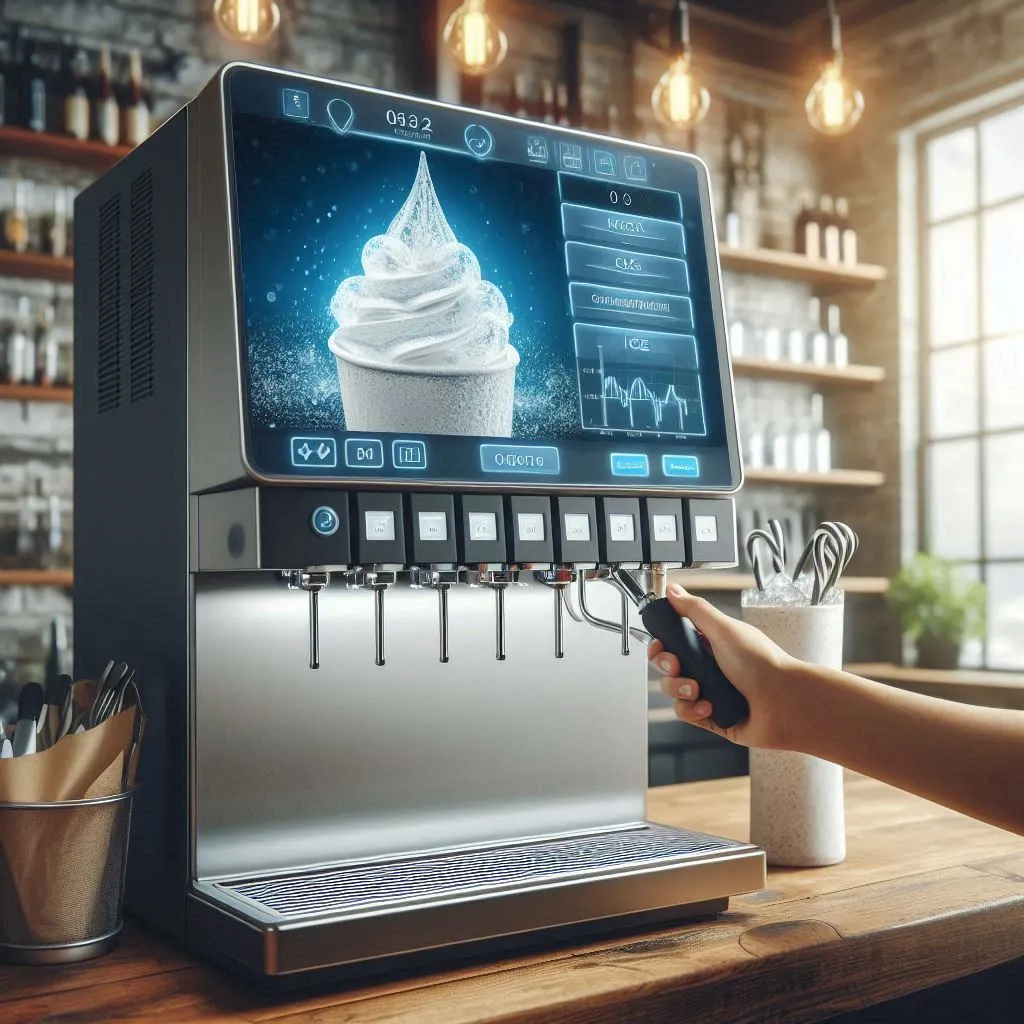
| Pros | Cons |
|---|---|
| Convenience: Offers both soda and ice in one integrated machine. | High Initial Cost: Can be expensive to purchase upfront, especially for larger units. |
| Space-Saving: Combines two functionalities in one appliance, saving valuable space. | Maintenance Requirements: Regular cleaning and upkeep are necessary to keep it running smoothly. |
| Cost-Efficient: Reduces the need to buy separate soda dispensers and ice makers, saving long-term costs. | Power and Water Consumption: These machines require significant power and water usage, which can add to utility bills. |
| Wide Variety of Drink Options: Many machines offer multiple soda flavor choices. | Complex Installation: Some models require professional installation, including plumbing and electrical work. |
| Fast Service: Provides instant soda and ice, speeding up service for both personal and commercial use. | Size: Even smaller machines can take up a considerable amount of counter or floor space. |
| Scalable: Available in various sizes, suitable for both home and commercial settings. | Noise: Ice-making components can generate noise, especially in high-production models. |
| Durable and Long-Lasting: Built to withstand high usage in busy environments. | Limited Flavors: Some machines may restrict the number of soda flavors based on the syrup connections available. |
Types of Soda Fountain Machines with Ice Makers
Countertop vs. Freestanding Machines
Soda fountain machines with ice makers come in two main styles: countertop and freestanding. Countertop models are more compact and ideal for small spaces like homes, offices, or cafes with limited counter space.
Freestanding units are more significant and offer higher capacity, which is better suited to restaurants, convenience stores, or places with high customer traffic. Deciding between these two depends on your space and the volume of drinks you need to serve.
Self-Serve vs. Staff-Operated Machines
Another distinction is between self-serve and staff-operated machines. Self-serve machines, standard in fast-food restaurants, allow customers to fill their drinks, often with multiple flavour choices.
These machines are designed to be easy to use and require less supervision. Staff-operated machines, on the other hand, are typically found behind the counter in restaurants or cafes, where only employees have access. They are often larger and offer more control over portions and drink options.
Choosing the Right Machine for Your Needs
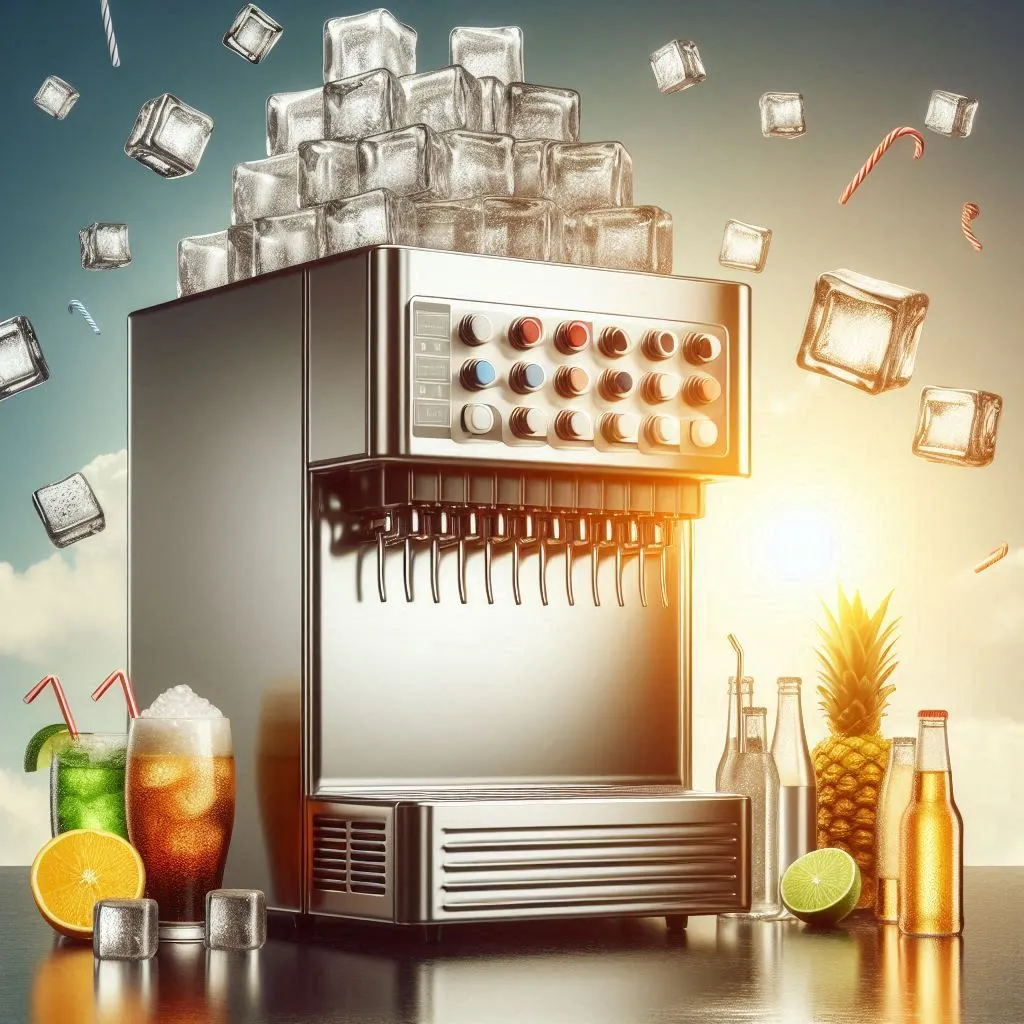
For Commercial Use
If purchasing a soda fountain machine with an ice maker for commercial use, you’ll want to focus on high-capacity models that can handle many customers. Consider features like a high ice production rate, multiple drink options, and durability to withstand daily use. Consider the traffic your establishment receives and ensure the machine can keep up with demand without frequent downtime for maintenance or ice shortages.
For Home Use
A smaller machine with fewer drink options may be sufficient for home use. Homeowners often prioritize convenience and space-saving designs, so that a countertop model might be the best choice. Ensure the machine is easy to maintain and doesn’t require a complex setup.
It’s also important to check the power requirements and ensure the unit fits comfortably in your kitchen or entertainment area.
Installation and Setup Tips
Space Planning
Before purchasing a soda fountain machine with an ice maker, plan the space where it will be installed. Measure the available area carefully and ensure enough room for the machine, especially if opting for a freestanding model. Consider space for the machine’s ventilation, as improper airflow can affect performance.
Professional Installation vs. DIY
Depending on the complexity of the machine, you may need to decide between professional installation and doing it yourself. Some machines require plumbing and electrical connections that a professional best handles to avoid issues down the line.
However, smaller countertop models might be easy enough to set up yourself, as they typically only require a power source and access to water.

